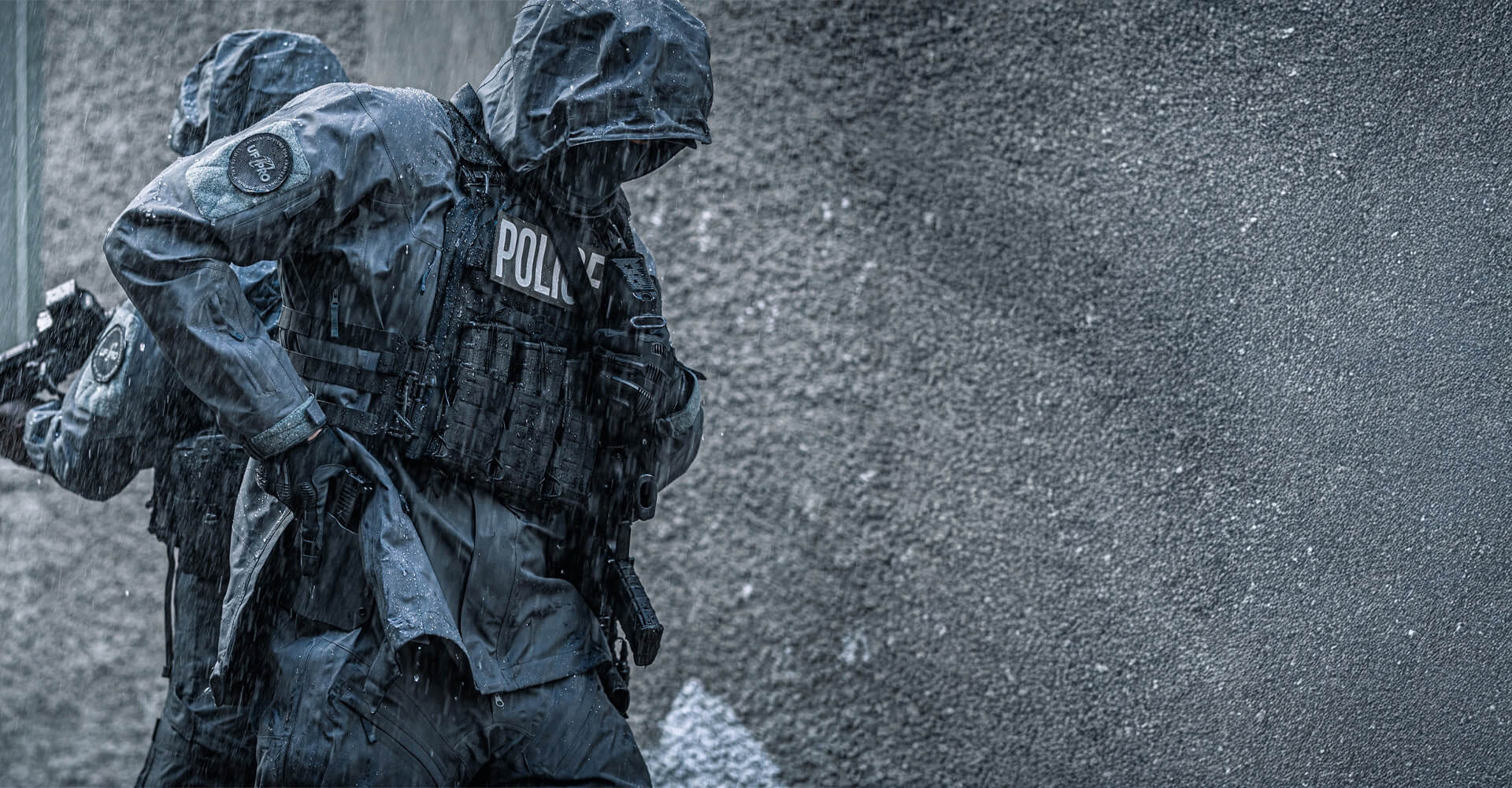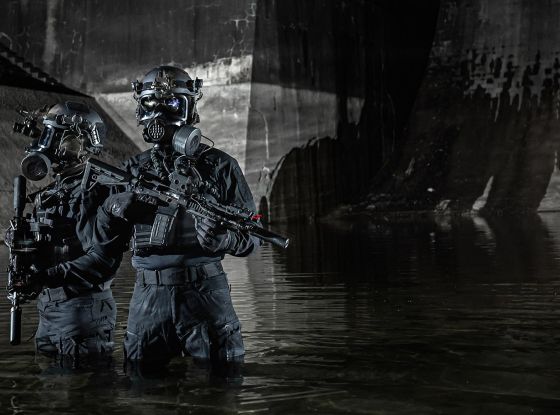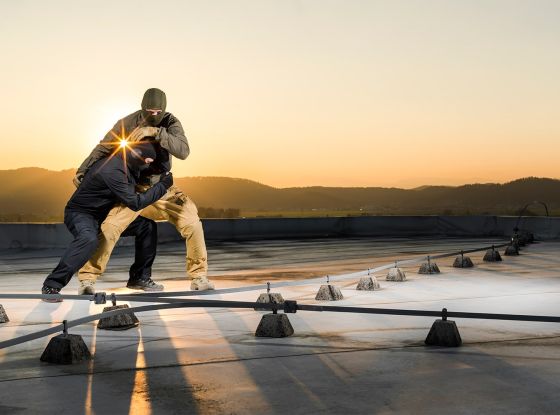You're deployed. The skies have opened. You’re drenched, visibility is low, and the mission doesn’t pause just because the weather turned.
In these moments, the difference between gear that performs and gear that folds isn’t comfort—it’s survival. Your waterproof jacket isn’t just a layer. It’s a piece of operational equipment designed to shield, move, and breathe under pressure.
In this blog, we explore what goes into building mission-ready waterproof outerwear. From materials and construction to breathability and tactical features, here’s what makes high-performance rain gear hold up when conditions break down.
In this blog post:
- Waterproof, Water-Resistant, or Water-Repellent?
- Inside a Waterproof Jacket: What Really Matters
- Construction Details That Make It Tactical
- Why Breathability in Tactical Rainwear Is Non-Negotiable
- Tactical Advantage: More Than Staying Dry
- The Limits of Any Waterproof Jacket
- Choose the Right Jacket for the Job
- Final Thoughts
Waterproof, Water-Resistant, or Water-Repellent?
Before diving into technical construction, it’s essential to clarify what each of these terms actually means—because they aren’t interchangeable.
- Water-resistant: Offers basic protection against light rain. Think of it as your first line of defense—fine for drizzles, but not for prolonged exposure.
- Water-repellent: These garments have a DWR (Durable Water Repellent) coating that causes water to bead up and roll off the surface. Better than water-resistant, but not fully sealed.
- Waterproof: This is where serious protection starts. Waterproof jackets feature layered membranes, sealed seams, and weather-tight components that prevent water from getting in—no matter how long you're exposed.
If you're operating in persistent rain or unpredictable conditions, waterproof is the only category that keeps you dry—and in the fight.
To better understand how these levels of protection differ and when each might be appropriate, see our blog post Waterproof vs. Water-Repellent: What’s the Difference.

Inside a Waterproof Jacket: What Really Matters
At the core of any high-performance waterproof jacket is its layered construction. Most tactical jackets use a laminate system made up of two, two-and-a-half, or three layers:
- Outer fabric (face fabric): This is the first point of contact with rain and abrasion. It’s built tough and treated with a DWR coating that causes water to bead and roll off.
- Membrane (e.g., GORE-TEX): This is where the real waterproofing happens. It’s a breathable barrier with microscopic pores that block water droplets while allowing sweat vapor to escape.
- Inner lining: Protects the membrane from friction and wear while adding comfort. Often made from mesh or soft knit fabric, this layer improves long-wear usability and protects against internal abrasion.
Each layer plays a critical role. And while all waterproof jackets may look similar on the outside, it’s the quality of materials and how they’re laminated together that separates average from mission-grade.
For tactical use, 3-layer laminates are the gold standard—offering optimal durability, structure, and breathability in one integrated package.
For more on how GORE-TEX materials perform under pressure, read our Performance Features of GORE-TEX Materials. And if you want to understand how this fits into your full system, visit our Ultimate Guide to Clothing Layers.
Construction Details That Make It Tactical
Material alone doesn’t cut it. Precision construction defines tactical rainwear:
- Seam sealing: Every stitch creates potential leaks. Heat-applied tape seals them tight.
- Waterproof zippers: Laminated and pressure-sealed to prevent water ingress.
- Functional hood design: Adjustable and helmet-compatible with a visor and volume control.
- Adjustable cuffs and hems: Reinforced to keep rain out during movement or prone positions.
A jacket might look waterproof—until poor construction proves otherwise.
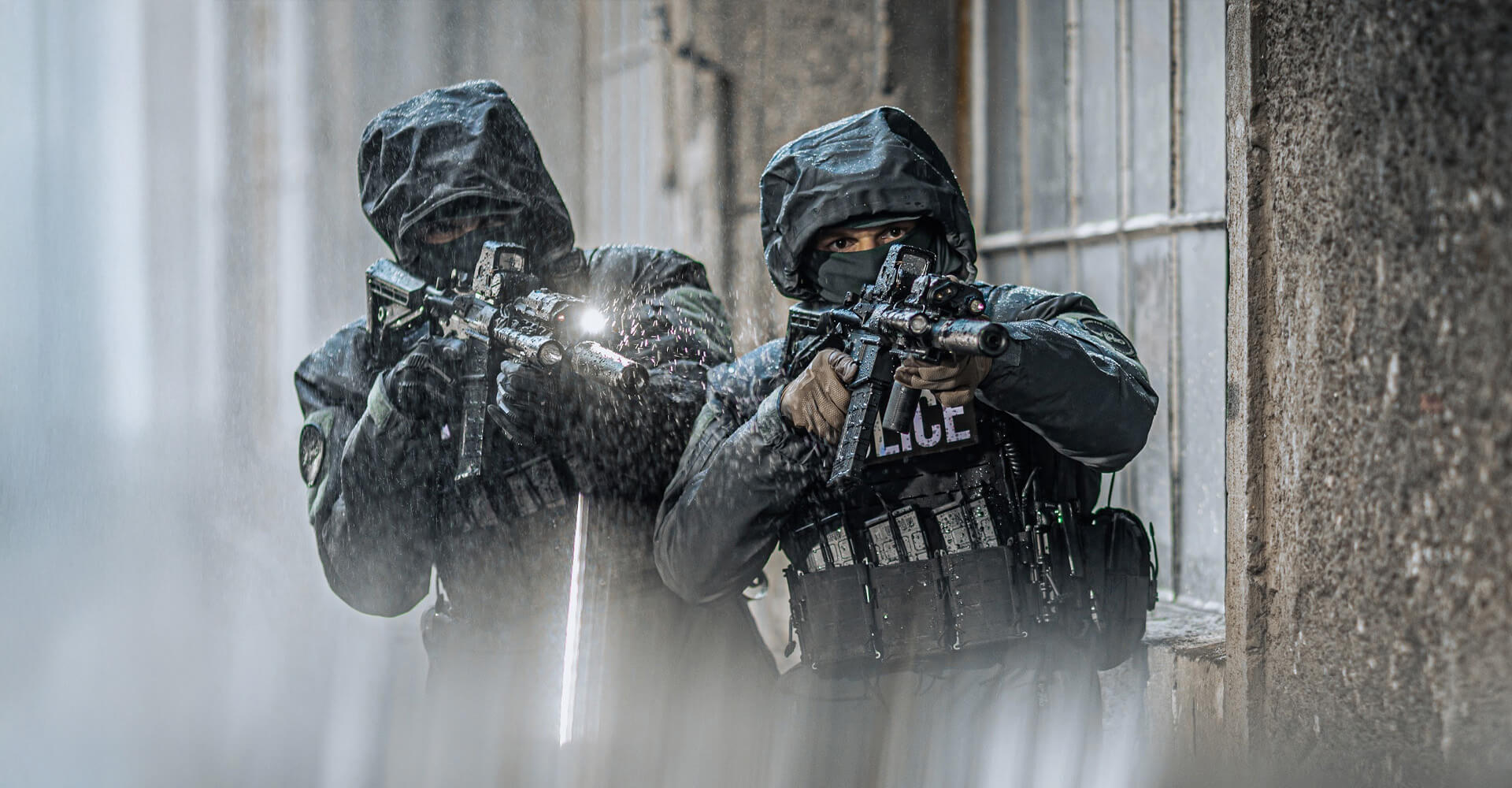
Why Breathability in Tactical Rainwear Is Non-Negotiable
It’s one thing to keep water out. It’s another to keep you from drowning in your own sweat. Breathability refers to how well your waterproof jacket lets moisture vapor escape from the inside. In active tactical settings, poor breathability can lead to overheating, fatigue, and even cold shock when you stop moving and that sweat starts to chill you.
That’s why high-end waterproof gear pairs protection with breathability. Materials like ePTFE membranes and smart vent placements keep airflow moving, allowing your body to regulate heat without compromising waterproof integrity.
In tactical environments where tempo shifts from still to sprint in seconds, this feature becomes critical.
Want to explore how these breathable laminates hold up in reality? Read our Limits of GORE-TEX Laminates.
SUBSCRIBE TO UNLOCK OUR EXCLUSIVE CONTENT
Enter your email and get timely updates and relevant intel on tactical topics directly to your inbox.
You are signing up to receive updates via e-mail from which you can opt out at any time. Visit our privacy policy for more info.
Tactical Advantage: More Than Staying Dry
Silent Movement
Rustling fabric can give you away. That’s why high-end tactical rainwear uses low-noise face fabrics using materials that reduce the rustling sound of movement. This quiet performance is essential for reconnaissance, patrolling, or navigating urban terrain where sound discipline matters just as much as weather protection.
Gear Compatibility
A tactical waterproof jacket isn’t worn alone. It needs to integrate seamlessly with plate carriers, rucks, and belts. That’s why modularity is built into the design. Expect streamlined cuts, reinforced shoulders, and low-profile seams that prevent bunching or discomfort when layering over gear. Even the placement of zippers, vents, and pockets is strategic—giving you access to essentials without compromising movement or protection.
Fast-Drying Interiors
Extended exposure to rain means wet layers — not just outside, but inside too. Sweat and condensation can lead to chilling, discomfort, and even skin maceration if the interior doesn’t dry quickly. The best waterproof jackets use moisture-wicking linings that reduce drying time and minimize clamminess, so you stay mission-ready instead of soaked and sluggish.
Heat Regulation
Staying dry is only half the battle. Overheating in waterproof gear can be just as dangerous as hypothermia. Tactical designs include ventilation zips, breathable materials, and smart construction layouts that promote airflow without letting in water. This allows your body to regulate heat during high-output movements like sprinting, climbing, or breaching.
The Limits of Any Waterproof Jacket
Even mission-grade gear has thresholds:
- Pressure points: Sitting or leaning can push moisture through membranes.
- Extreme weather: Wind-driven rain can sneak through poorly designed seals.
- High humidity: Overwhelms even breathable membranes, leading to internal condensation.
Knowing these limits helps you layer smart, use vents correctly, and understand when to supplement with additional shell systems.
Want to extend the life of your gear? Read our article on How to Maintain Rain Gear and DWR Treatment.
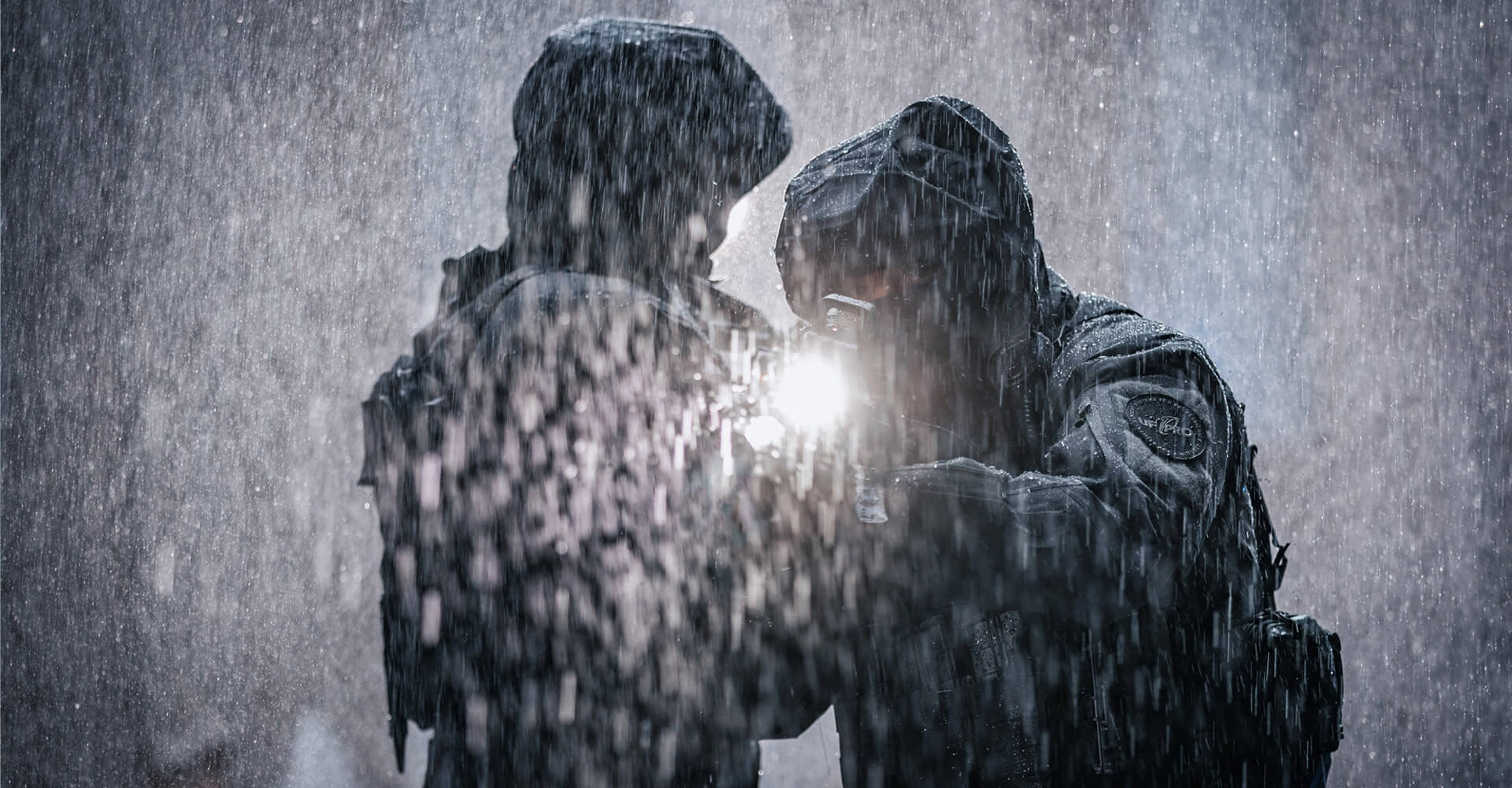
Choose the Right Jacket for the Job
Waterproof rating is only one part of the equation. Consider:
- Environment: Are you facing monsoon-like rain or light drizzle? Cold, windy plains or humid jungle? The answer shapes your jacket’s construction.
- Mobility: Features like articulated arms, stretch zones, and ventilation zips become critical during prolonged wear and movement.
- Durability: If you're navigating thorny brush, rocky terrain, or urban rubble, go for abrasion-resistant materials and reinforced zones.
- Layering system: Make sure your jacket integrates seamlessly with thermal gear, plate carriers, or harnesses without bunching or restricting movement.
A tactical jacket needs to be more than waterproof—it needs to perform with the rest of your kit under pressure.
Final Thoughts
Your waterproof jacket isn’t an accessory. It’s part of your loadout. And like every other piece of mission gear, it has to perform under pressure.
Built to endure. Built for movement. Built to keep you locked in when everything else breaks down.
Don’t just wear it. Rely on it.

